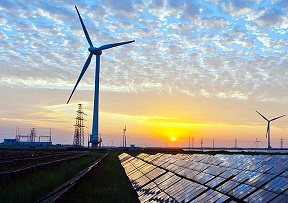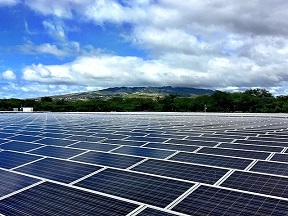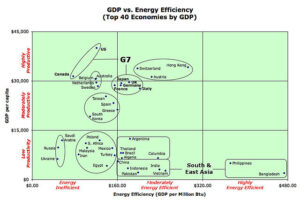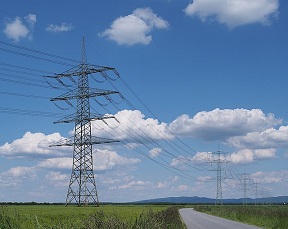The growth of solar and wind power has sparked a debate on how much renewable energy the grid can carry. The more solar we add to the grid, the less valuable it becomes. Can we escape from this dilemma and create a sustainable grid? Are there smart solutions to this problem?
The advent of solar and wind – with their problems
Solar and wind power are rapidly taking over electricity supply. In 2022, Chile was the leading country in the share of solar power in the overall electricity mix, with 18%. In the second position was Honduras with a share of 12.5% followed by Australia with a share of 12.3%. In terms of solar capacity per capita in 2022, Australia and the Netherlands were leading, with Germany with 807 watts in third place (according to Wikipedia).

Those are great results. But they don’t necessarily carry a sustainable grid. As the share of solar rises, it is harder to accommodate it in the system. Therefore, its value diminishes. Solar power will more often be available when it isn’t needed. So long as it gets ever cheaper to build and operate solar power plants, this is not a serious problem. But at a certain point, the process will meet its limits. From then onward, it will often no longer be economical to build and operate solar power units. So, how can we expect the electricity system to become solar based? Will the combination with wind energy be beneficial? Or will storage systems provide the answer?
How dependable is a renewable system?
And then, there is the question to what extent a renewable energy system will be dependable. We are accustomed to an electricity system that has a very limited number of blackouts. With intermittent sources like solar and wind power, won’t the number and severity of blackouts increase? Well, the figures tell otherwise. Contrary to what one might expect, Germany is a country with very few blackouts. In year 2020 the average blackout was just 15 minutes, which makes it the fourth most reliable country in Europe. Let’s say that there is no evidence linking blackouts to increasing shares of solar and wind power.

Finally, there is the old problem, raised in an article by Amory Lovins and M.V. Ramana: how can intermittent sources become the basis of a stable and continuous sustainable grid? This is the fundamental question, so we need to get into this. Firstly, the authors note that in conventional systems, power plants also fail – and fail for a long time, sometimes. On the average in the US, big fossil and nuclear plants were out of service between 7 and 12% of the time. There also are unplanned highs, like in France, where in 2019 nuclear power plants were on average out of service 26% of the time.
The sustainable grid
Grid operators need to deal with unpredictable events. In the existing grid, in case of failure, other power plants will have to provide the backup required. Even that system isn’t perfect – blackouts do occur. But can a growing number of renewable sources result in a sustainable grid? Of course, solar and wind electricity partly cancel out each other’s irregularities. Pumped storage systems may help. Most people will point to batteries as the perfect system to store any excess electricity for when it is needed. In fact, batteries become cheaper all the time. And Lovins and Ramana point out that ‘new storage technologies with diverse attributes continue to emerge; the U.S. Department of Energy Global Energy Storage Database lists 30 kinds already deployed or under construction. Meanwhile, many other and less expensive carbon-free ways exist to deal with variable renewables besides giant batteries.’

Energy efficiency is the most important technique. For instance, better insulated buildings store heat for a longer time. Second is demand flexibility, wherein utilities compensate electricity customers that lower their use when asked; often done without the customer even noticing. The appreciation for this is growing, as it may prevent blackouts. And a sustainable grid can in many ways store an excess of electricity generated, and use it when it is needed – storage in motor car batteries is the best-known example of such a scheme. Or ice storage in hot climates: produce ice at night and use it during the day as a backup for the air conditioning. Even in the dark European winters, German and Belgian grid operators find that Europe would need only one to two weeks of renewably derived backup fuel.
Diversification and behavioral changes
And then, the authors mention diversification in renewable energy sources as an important means. Make sure that the grid is fuelled by ‘onshore wind, offshore wind, solar panels, solar thermal power, geothermal, hydropower, burning municipal or industrial or agricultural wastes’, insofar available. The conclusion of this article: ‘electrical grids can deal with much larger fractions of renewable energy at zero or modest cost, and this has been known for quite a while.’
All these solutions even disregard that people may change their behaviour. It’s like the elephant in the room. Not mentioned because we’ve become so accustomed to carefree living. But wouldn’t new technologies carry new behavioural patterns? Couldn’t we become accustomed to washing the laundry when the sun is shining? Could the joy of making use of ambient energy make some people support the cold for one or two weeks? I haven’t seen any article that explores this road.
Grid optimization
And then, there is the question to what extent a sustainable grid can carry the renewable electricity sources. Remember, the grid has been constructed with a completely other architecture in mind: transport electricity from remote places where we generate electricity, to population centres. It may be terribly inadequate for the new situation, in which at least solar energy will be generated to a large extent where it is being used. The consequence is that installations yet to be built may have to wait for the grid to be extended. And this may take many years. Because nobody wants high voltage lines across their land.

But there may be a solution to this problem: transport more electricity across existing high-voltage lines. That’s possible because power lines generally are not used to their fullest. Limits on how much power the lines can carry have been set in the past. These are conservative, because the net needs to be reliable and safe. But wouldn’t new technologies allow us to get more out of existing lines? Make room for new renewables? In view of the long time required to plan and build new high-voltage lines, and the possible public resistance against them, this is worth considering. One such new technology was developed by LineVision. The company produces equipment that monitors high-voltage lines by lidar; overheating will cause lines to sag. In this way, we can determine more exactly how much power the lines can transport.
Local optimization
But again, we may comment, this disregards an obvious solution to such problems: local optimization, partly through behavioural change. Any demand when there is much supply, or that can be met locally, does not strain the network. Again, this isn’t what we have been used to. But local optimization might contribute a lot to relieving network problems. It might even add to satisfaction with the owners of the equipment in question: the joy of being self-sufficient, at least most of the time.
The measures we take today may not be the ones that we may require later, when renewable sources generate most power in the system. An article in Technology Review mentions that ‘study after study finds that storage and system costs rise sharply once renewables provide the vast majority of electricity on the grid.’ But this shouldn’t stop us from finding solutions for today’s problems.
Grid stability
A final question that troubles grid operators is how to ensure stability on the future grid. At present, this is a function mainly provided by large power stations. They have ‘large spinning generators that continuously adjust their power outage to demand, and they buy time in the event of an unexpected power outage. But these functions need to be supplied otherwise if there are many solar panels and wind turbines on the grid.’ Says an article in Science News. But a sustainable grid that incorporates large amounts of renewable energy works very differently. It relies on inverters that convert direct current into alternating current. Fortunately, technicians have developed ‘grid-forming inverters’ that can sense the changes in the grid and respond in real time to adjust its frequency, and inject more or less power as needed to stabilize the grid. This will add the function lost when large power stations no longer fuel the network. But we don’t yet know what percentage of inverters need to be grid-forming – as a function of the makeup of the network. There is still a lot to develop!
Interesting? Then also read:
Local optimization of the grid
Energy storage will accelerate the transition
Scale issues in the energy transition
